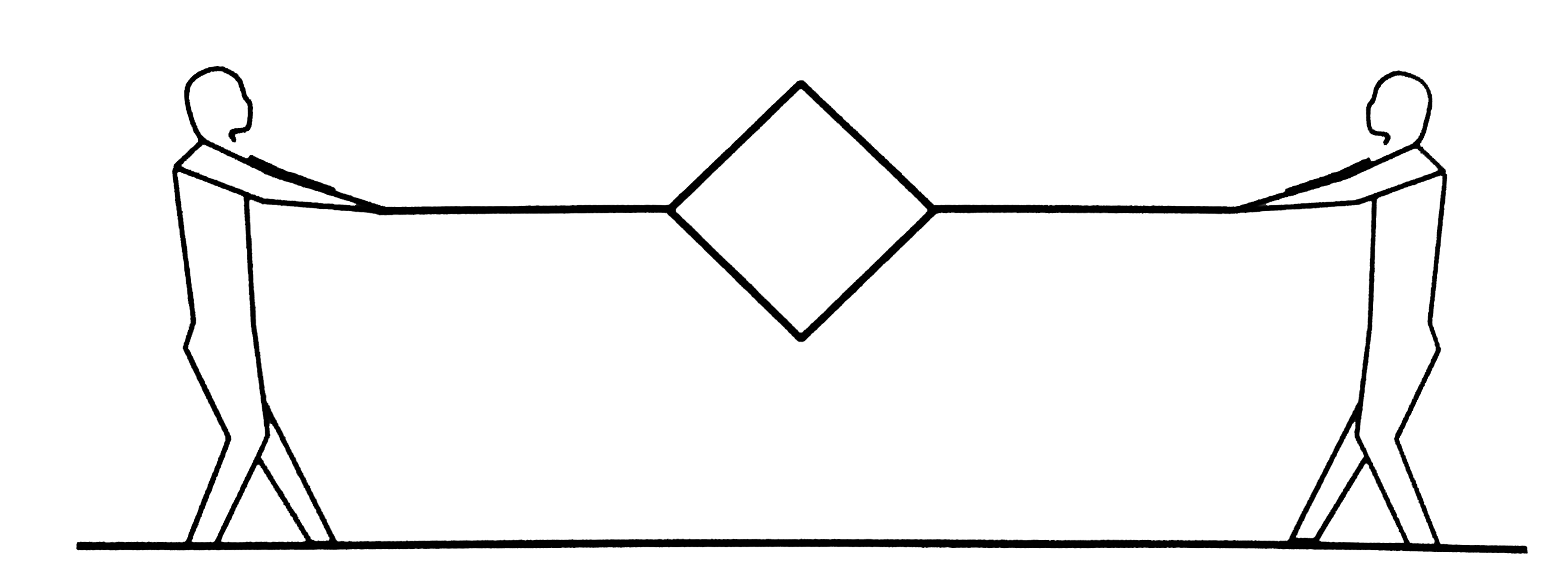A particle A having a charge of 2.0×10−6C is held fixed on a horizontal table. A second charged jparticle of mass 80g stays in equilibrium on the table at a distance of 10 cm from the firsst charge. The coefficient of friction between the table and this second jparticle is μ=0.2. find the range within which the charge of this second particle may lie. Solution in Gujrati
Qa=2×10−5C,MB=80g
Since B is at equillibrium, Fe=μR
⇒μR=μmg
⇒=0.2×0.08×9.8
⇒Qt=8.7×10−5×10−3
=8.7×10−8C
Char≥=+8.7×10−8C
Topper's Solved these Questions
- BOOK - HC VERMACHAPTER - ELECTRIC FIELD AND POTENTIALEXERCISE - Objective 28videos
ELECTRIC FIELD AND POTENTIAL
- BOOK - HC VERMACHAPTER - ELECTRIC CURRENT THROUGH GASESEXERCISE - Exercises23videos
ELECTRIC CURRENT THROUGH GASES
- BOOK - HC VERMACHAPTER - ELECTROMAGNETIC INDUCTIONEXERCISE - EXERCISE9videos
ELECTROMAGNETIC INDUCTION
Similar Questions
Mark out the correct potons.
03:04View SolutionA discharge tube contains helium at a low pressure. A large potential difference is applied across the tube. Consider a helium atom that has just been ionized due to the detachment of an atomic electron. Find the ratio of the distance travelled by the free electron to that by the positive ion in a short time dt after the ionization.
03:10View SolutionShown a metallic square frame of edga a in a vertical plane. A uniform magnetic field B exists in the space in a directon perpendicular to the plane of the figure. Two boys pull the opposite corners of the square ot deform it into a rhombus. They start pulling the corners t t=0 and sisplace the corners at a uniform speed u. (a) find the induced emf in the frame at the instant when the angles at these corners reduce to 60∘. (b) find the induced current in the frame at this instatnt if the total resistance of the frame is R. (c) Find the total charge which flows through a side of the frame by the time the square is deformed into a straight line.
 04:30View Solution
04:30View SolutionTwo particles, each having a mass of 5 g and charge. 1.0×10−7 C, stay in limiting wquilibrium on a horizontal. table with a seaprtion of 10 cm between them. The coefficient of friction beteen each partcle and the table. is the same. Find the value of this coefficient.
02:30View SolutionA particle A having a charge of 2.0xx10 ^(-6) C is held fixed on a horizontal table. A second charged jparticle of mass 80g stays in equilibrium on the table at a distance of 10 cm from the firsst charge. The coefficient of friction between the table and this second jparticle is mu = 0.2 . find the range within which the charge of this second particle may lie.
04:49View SolutionA particle A having a charge 10μC is held fixed on a horizontal surface. A block of mass 80g and having charge stays in equilibrium on the surface at a distance 3cm from the first charge. The coefficient of friction between the surface and the block is μ=0.5. Find the range within which the charge on the block may lie.
11:26View SolutionA block 'A' of charge q1 is fixed and second block of mass m and charge q2 is allowed to free on the floor findout the range of q2 for which the particle is at rest.
 09:11View Solution
09:11View SolutionTwo particles, each having a mass of 5 gm and charge 1.0×10−7C, stay in limiting equilirbium on a horizontal table with a separation of 10 cm between them. The coefficient of friction between each particle and the table is the same. Find the value of this coefficient.
 04:11View Solution
04:11View SolutionA particle of mass 100 gm and charge 2muC is released from a distance of 50 cm from a fixed charge of 5muC . Find the speed of the particle when its distance from the fixed charge becomes 3 m.
03:23View SolutionA particle of mass 100 gm and charge 2muC is released from a distance of 50 cm from a fixed charge of 5muC . Find the speed of the particle when its distance from the fixed charge becomes 3 m.
03:00View SolutionTwo particles with charges +3.72μC and +1.86μC are some distance apart. If 20% of the charge is transferred from particle to second particle then the electrostatic force between them is
02:58View SolutionA point charge Q is kept fixed on a table and another particle of charge q and mass m is to be placed in air in such a way that it remains suspended at the same location in a state of equilibrium. What should be the distance of particle from point charge fixed on table?
05:40View Solution5g mass and 1.0 xx 10^(-7)C Two particles of charge reside in marginal equilibrium on a horizontal table at a distance of 10 cm from each other. The friction multiplier of each particle is equal with the table. Find the value of this multiplier.
View SolutionTwo particles, each having a mass of 5 g and charge. 1.0×10−7 C, stay in limiting quilibrium on a horizontal. table with a separation of 10 cm between them. The coefficient of friction between each partcle and the table. is the same. Find the value of this coefficient.
View SolutionA particle A having a charge of 2.0xx10 ^(-6) C is held fixed on a horizontal table. A second charged jparticle of mass 80g stays in equilibrium on the table at a distance of 10 cm from the firsst charge. The coefficient of friction between the table and this second jparticle is mu = 0.2 . find the range within which the charge of this second particle may lie.
View SolutionA particle of mass 2 gm and charge 1μC is held at rest on a frictionless horizontal surface at a distance of 1m from the fixed charge of 1 milli coulomb. If the particle is released it will be repelled. The speed of the particle when it is at a distance of 10m from the fixed charge is:
02:05View Solution

